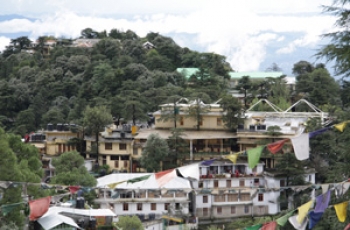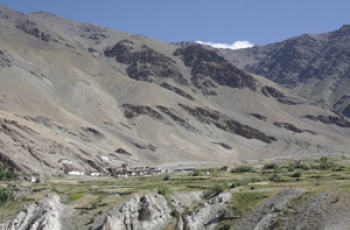Sikkim
Sikkim
HISTORY OF
State Capital : Gangtok
Best Time to Travel : March to June and September to December
Languages : Nepali, English, Hindi, Bhutia (Sikkimese), Bhutia (Tibetan), Lepcha, Limboo.
Sikkim lies in the Eastern Himalayas. Being a region which had its geophysical uniqueness owing to its location and climate conditions, human inhabitation was sparse. It was only in 1641 that it was given a political entity. The population inhabiting this area was of Indo-Mongoloid, Tibetan or Nepalese origin. The population of the region is rural and tribal. The influence of the Buddhism has created a unique culture, different from other parts of the country. The tribals had little contact with the other parts of the country. Agriculture through jhum cultivation besides animal rearing formed their important occupation. The Lepchas and the Bhutias who came from the regions of Tibet settled in Sikkim.
The History
The original people of Sikkim were the Lepchas, which means "ravine folk." Lepchas came to the region from the Assam and Myanmar side. During 1200's AD, the Bhutia, a Tibetan people, started moving into the region. They included the Namgyal clan, who arrived in the 1400's and steadily won political control over Sikkim. In 1642, Phuntsog Namgyal (1604-1670) became the Chogyal (king). He presided over a social system based on Tibetan Lamaistic Buddhism. His descendants of Phuntsog Namgyal ruled Sikkim for more than 330 years.
During the 1700's, Sikkim suffered continuos attacks from Nepal and Bhutan, after which it lost much of its territory. Nepalese also came to Sikkim and settled there as farmers. By the 1800's, Sikkim's population was culturally very complicated, and internal conflict resulted. In 1814-1815, Sikkim backed the British in a successful war against Nepal, and won back some of its territory, once lost.
In 1835, the British East India Company acquired the health resort of Darjeeling from Sikkim. During the mid-1800's, Sikkim violently withstand attempts to bring it under British rule, but in 1861 it finally became a British colony. The British had access through Sikkim to Tibet, and Sikkim's independent status was recognised.
In 1890, Britain and China signed a convention recognising the border between Sikkim and Tibet. Later, the British installed a political office to help the Chogyal of Sikkim run the internal and external functions of the kingdom.
It was in the year 1950, the Indian government took over the responsibility for Sikkim's external affairs, defence, and communication. The struggle that had brought Indian independence in year 1947 promoted a democratic boom in Sikkim. The Chogyals lost their power as a result of the gradual introduction of a new democratic constitution. In 1973, India took Sikkim into the union as an associate member. In 1974, Sikkim became India's 22nd state.
The Physiology of Sikkim
Sikkim has a very rugged topography and flatlands are difficult to come by. Being a part of the inner mountain ranges of the Himalayas, Sikkim is hilly, having varied elevations ranging from 300 to 8,540 meters. But the habitable areas are only up to the altitude of 2,100 metres and thus constitute only 20% of the total area of the state.
HOW TO REACH
By Air : The nearest airport is Bagdogra(North Bengal) which is 124 kms away and about 4 hours drive from Gangtok. There are Indian Airlines and other private Airline services operating from Bagdogra linking Kolkata, Guwahati and New Delhi.
Local Transport : The modest way of commuting, on foot is the best in Gangtok. Though un-metered taxis are there for local transport. Every taxi carries a chart for all major points in the city. There are points within the city where the taxis ply and from there to other places, fares are already fixed.

LADAKH-DHARAMSHALA TOUR
Destinations:Dhramsala-Ladakh...
Trip Duration:16 days
Best Time:May - Nov
View Details
Spiti - Kinnaur - Ladakh tour
Destinations:Kalpa-Kaza-Ladakh...
Trip Duration:15 days
Best Time:May - Nov
View Details
Nun Kun Expedition
Destinations:Delhi - Leh - kargil...
Trip Duration:24 days
Best Time:May - Nov
View Details
Manali Leh Mountain Bike
Destinations:Manali - Serchu - Je...
Trip Duration:15 Days
Best Time:May - Nov
View Details
Lamayuru-Darcha Trek
Destinations:Ladakh/Zanskar...
Trip Duration:25 Days
Best Time:May - Nov
View Details




